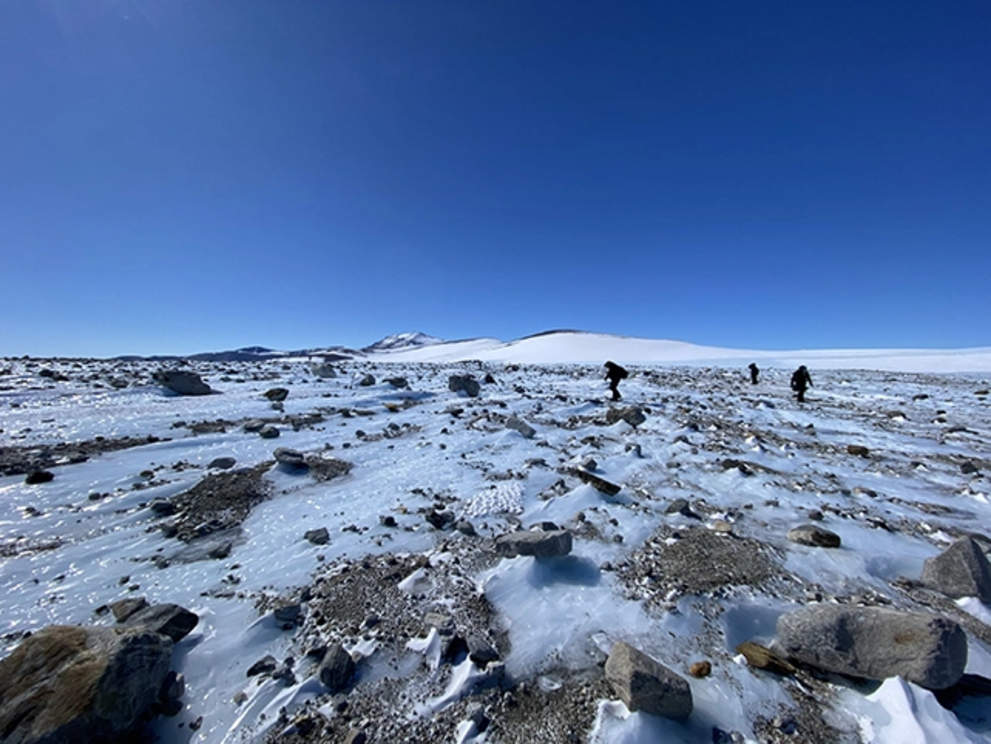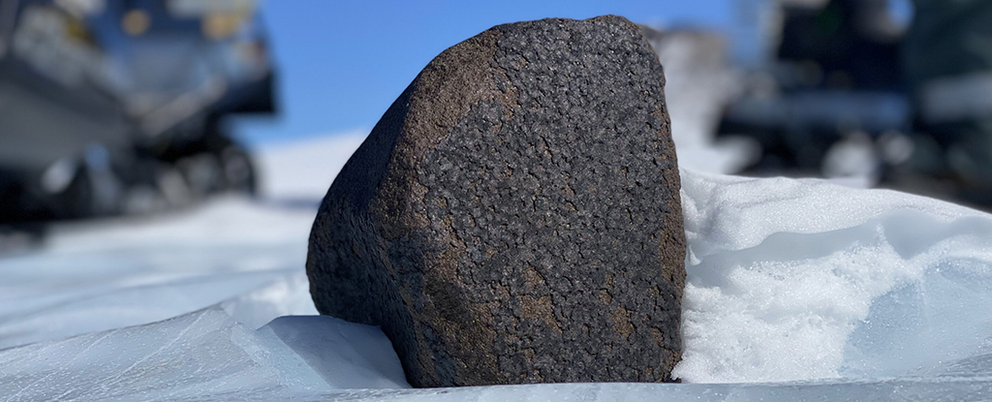Monster space rock in Antarctica is among the largest found in 100 years
The large meteorite that's been recovered.
Antarctica has a lot going for it when it comes to meteorite hunting. The dark rocks stand out against the icy landscape. Its dry climate keeps weathering to a minimum. And even when meteorites sink into the ice they are often returned to the surface by the churning of the glaciers.
In spite of these ideal conditions, finding sizeable chunks of space rock is rare.
A group of researchers have just returned from the ice-covered continent with five new meteorites that include an unusually large specimen.
The big find in this haul weighs in at 7.6 kilograms (16.8 pounds), placing it in the top 100 in terms of size for meteorites recovered in Antarctica over the past century. Considering some 45,000 have been recovered in that time, that's saying something.
This monster of a space rock is now being taken back to the Royal Belgian Institute of Natural Sciences, where it will be studied closely along with the smaller rocks. Scientists can learn a lot from the journeys that meteorites have had to our planet.
"Size doesn't necessarily matter when it comes to meteorites, and even tiny micrometeorites can be incredibly scientifically valuable," says cosmochemist Maria Valdes, from the Field Museum in Illinois. "But of course, finding a big meteorite like this one is rare, and really exciting."
While meteorites might be easier to spot in Antarctica, the continent isn't exactly easy to travel across, with its freezing cold conditions and remote location. The team involved in this find spent several days camping out in the wilderness, moving by foot and snowmobile.
It also helps to know where meteorites are likely to be found. Here the researchers used a 'treasure map' that was published last year, which uses clues found in satellite imagery – such as ice flow, temperature, and surface slope measurements – to make educated guesses with the help of AI as to where new rocks might be found.
 The researchers at work on an ice field.
The researchers at work on an ice field.
"Going on an adventure exploring unknown areas is exciting," says geoscientist Vinciane Debaille, from the Université Libre de Bruxelles in Belgium.
"But we also had to deal with the fact that the reality on the ground is much more difficult than the beauty of satellite images."
The map used by the researchers is thought to be around 80 percent accurate in terms of the directions it gives, and its makers have calculated that more than 300,000 meteorites are out there in Antarctica, waiting to be found.
Despite the favorable conditions in Antarctica for meteorite discovery, scientists think we're still missing out on finding a lot of them, particularly those high in iron. Part of the reason might be these types of meteorite heat up in the sunlight, melting the surrounding ice and sinking out of sight below the surface.
However, there's now an exciting new haul of these rocks ready and waiting to be looked at more closely – and somewhere in the newly recovered meteorites should be traces of the history of the Solar System that we exist in.
"The bigger a sample size we have of meteorites, the better we can understand our Solar System, and the better we can understand ourselves," says Valdes.

